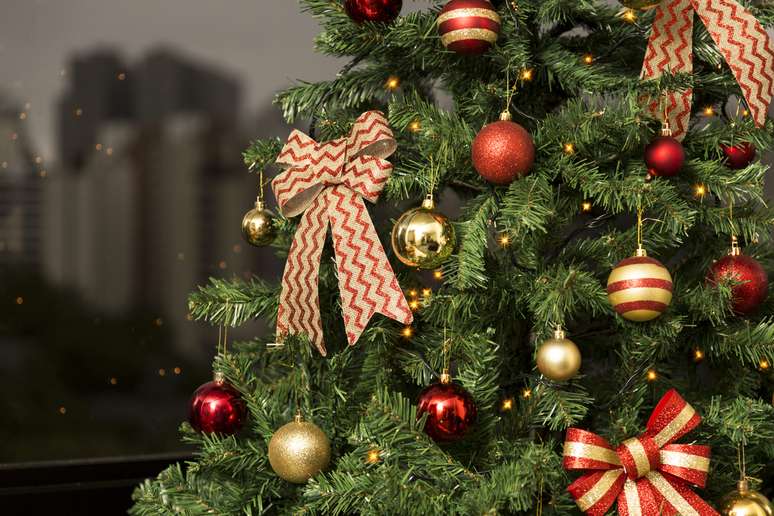One of the greatest symbols of Christmas, the Christmas tree has become an annual tradition and is full of meaning.
The Christmas tradition is full of colours, twinkling lights, carols and a story that has been passed down from generation to generation for many years. Many families have rituals for this period, such as a specific date for organizing the long-awaited wedding. Christmas decoration or even a calendar with the activities for the month of December.
But among the many symbols of Christmas, the one that most represents this festive spirit is the Christmas tree. Present in most homes at the end of the year, it is possible to see the beauty of blinders, traditional Christmas balls and even decorations with the face of the central figure of this ritual: Santa Claus.
But has this habit of putting up the tree at Christmas always been like this? Believe me, this goes beyond adorning the branches with twinkling lights and colorful decorations, it has already become a symbolic moment awaited by many people.
By discovering the history behind the meaning of the Christmas tree, we embark on a fascinating journey that connects us with the past and helps us understand different Christmas traditions.
The true meaning of the Christmas tree
The Christmas tree, in addition to being a symbol traditionally associated with Christmas celebrations, is the bearer of profound meanings that permeate different cultures and traditions. In essence, the tree represents life and renewalwhich symbolizes hope in the middle of winter, when many trees lose their leaves.
Decorating the tree with colored lights, decorations and decorations is also a way to express the joy and beauty that life offers, even in the most challenging moments. Although today the Christmas tradition has a very close connection with Christianity, the true meaning of the Christmas tree derives from a pagan origin.
Representing a symbol of rebirth and celebration of life, the tree symbolized the vitality and strength of nature, even during the cold, dark winter months.
The choice of an evergreen tree, such as the pine, one of the main symbols of Christmas, also symbolized the continuity of life and the hope that spring would bring renewed fertility and prosperity, even more so when the tree was well decorated.
Throughout history we can list countless pagan peoples who already had this tradition in their daily lives, such as the Egyptians, the Celts, the Romans, the Druids and the Vikings. Later the tree ended up being brought to other cultures and became what we know today.
Strong symbol of Christianity
The Christmas tree tradition also has deep roots in Christian culture and is associated with the celebration of the Christmas tree Christmasa celebration marking the birth of Jesus Christ.
Although the practice of decorating trees during winter celebrations has pagan origins, the incorporation of this tradition into Christian holidays has gained importance over the centuries and thus many people believe the origin to be in Germany.
One of the best-known stories is that of Martin Luther, the leader of the Protestant Reformation, who was inspired by the beauty of the stars shining through the branches of a pine tree as he walked in a forest. Impressed by the scene, Luther would take a pine tree home and then decorate it with candles and cotton to share the experience with his family.
From then on the Christmas tree began to be seen as a Christian symbol, reminding the faithful of the divine light that illuminates the darkness of the world.
But what is the meaning of the Christmas tree in the Bible? There is no direct mention of the Christmas tree in the holy book, but according to the Bible the tree is an important symbol. For example, some argue that the Christmas tree may symbolize the tree of life mentioned in the Book of Genesis in the Garden of Eden. Others draw a parallel between the star at the top of the Christmas tree and the Star of Bethlehem, which guided the Magi to the birthplace of Jesus, as described in the gospels.
As the tradition spread, Christmas trees began to be decorated with other symbolic elements, such as colored decorations, which represented the fruits of life, and baubles, which symbolized the apples of Paradise. The custom was gradually incorporated into other Christian cultures around the world, becoming an essential part of Christmas celebrations.
What is the date to put up the Christmas tree?
The tradition of putting up the Christmas tree varies depending on cultures and family traditions. But in many places the Christmas tree is usually put up in early December, but precisely in first Sunday of the month.
In some countries, like Brazil, for example, it is customary to dismantle it after the twelfth day, which is celebrated on January 6th. No matter what the origin of the Christmas tree, Christian or pagan, it is undeniable that it has become a symbol that makes a difference during Christmas celebrations.
Whether it’s for the Christmas spirit, for family unity when decorating the house for this commemorative date or even for a religious holiday, putting up the Christmas tree is more than just a seasonal decoration. The true meaning of the Christmas tree lies in the magic it brings into homes, connecting generations and creating memories that last forever.

-
BY PARTICIPATING

Special biscuit: how to decorate and season biscuits
-
BY PARTICIPATING

Left with nothing on Black Friday? Do this spell to make your wish come true
-
BY PARTICIPATING

Mental health: 5 common habits that can affect it
-
BY PARTICIPATING

Oatmeal cookie recipe
Source: Terra
Ben Stock is a lifestyle journalist and author at Gossipify. He writes about topics such as health, wellness, travel, food and home decor. He provides practical advice and inspiration to improve well-being, keeps readers up to date with latest lifestyle news and trends, known for his engaging writing style, in-depth analysis and unique perspectives.








